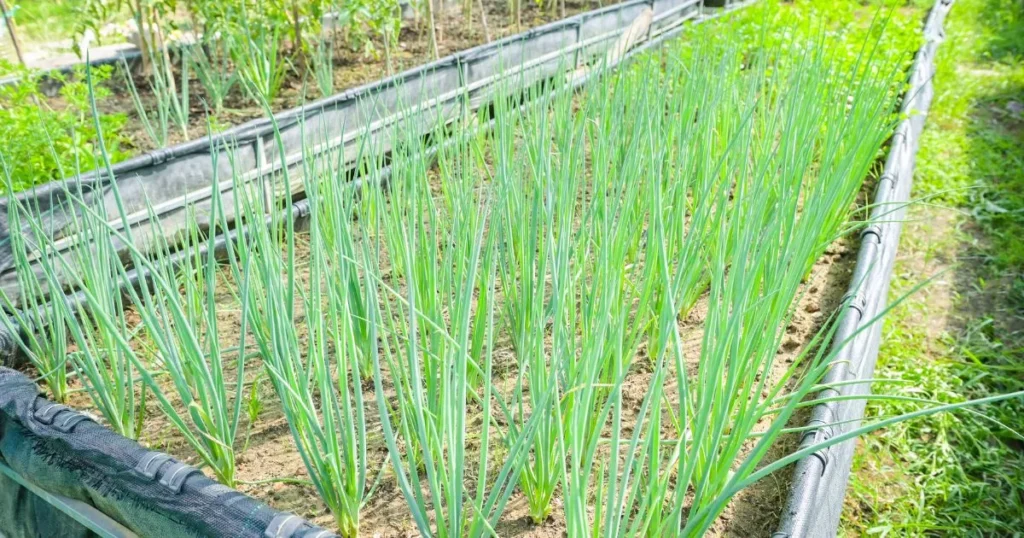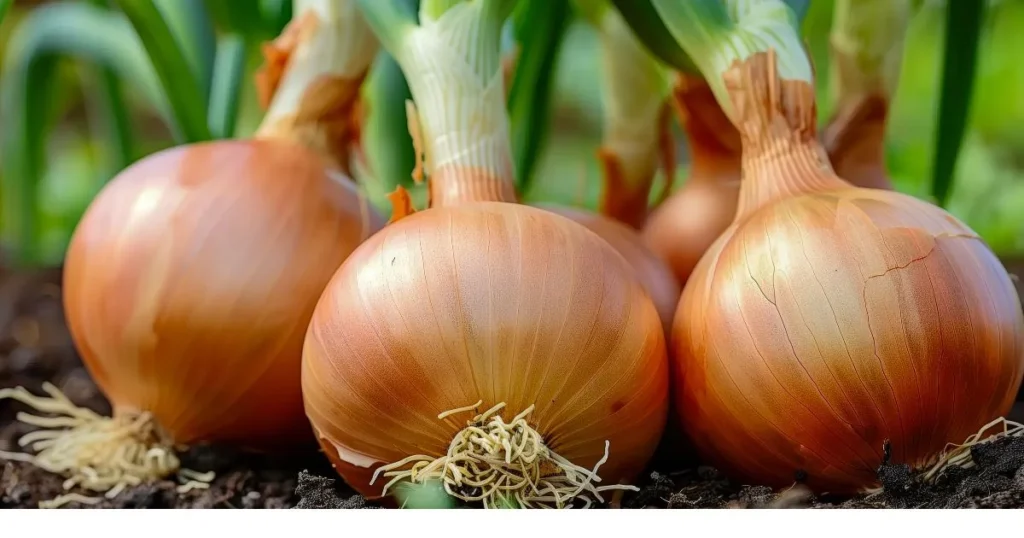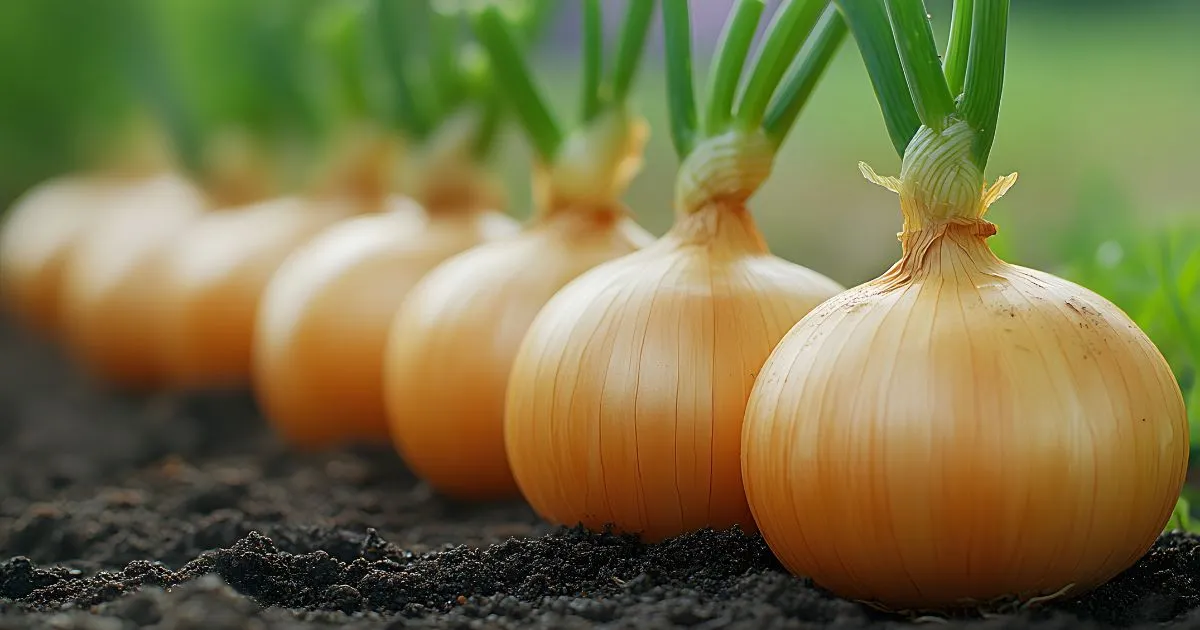Table of Contents
Introduction
If you’re passionate about growing your own food but don’t have the luxury of large garden space, growing onions in containers offers a great solution. Whether you’re a beginner gardener or an experienced one, growing onions in containers provides an accessible and rewarding way to harvest fresh, flavorful onions right at home. The versatility of container gardening allows you to grow onions on a balcony, patio, or even windowsill, making it ideal for city dwellers or those with limited gardening space.
Onions are relatively easy to grow, and their culinary value is enormous. There are many different types of onions to choose from, and they all thrive when grown in the right conditions. This guide will take you through all the essential steps of growing onions in containers, from choosing the right container to successfully harvesting and storing your crops.
Choosing the Right Container
The foundation of growing onions in containers begins with selecting the appropriate container. The right container not only ensures proper root development but also provides the necessary drainage to prevent waterlogging, a common problem in container gardening.
Container Size and Depth
One of the most important considerations when growing onions in containers is choosing a container that’s deep enough for the onions to grow properly. Onions have relatively shallow root systems, but they still need enough depth to form bulbs. A container that’s at least 10-12 inches deep is ideal for most onion varieties. Smaller containers, such as those used for growing herbs, may not be sufficient to accommodate larger onion types. Opt for larger containers if you plan to grow multiple bulbs in a single pot.
Material of the Container
The material of the container plays a significant role in regulating temperature and moisture levels. Growing Onions in Containers Plastic containers are lightweight, affordable, and retain moisture well, but they can get too hot in direct sunlight. Ceramic and terracotta containers are more porous and provide better air circulation to the roots, but they tend to dry out faster, requiring more frequent watering. Wooden containers, such as raised garden beds or wooden barrels, are also great for onions because they provide both aesthetics and practicality.
Make sure the container you choose has at least one drainage hole at the bottom to prevent the soil from becoming too waterlogged, which can lead to root rot.

Selecting Onion Varieties
Onions come in many varieties, and selecting the right one for container gardening is essential. Some varieties are better suited for containers due to their compact size, while others may require more space to develop properly. Here’s a breakdown of suitable onion types for growing onions in containers:
Bulb Onions
Bulb onions are the most common type of onion, and they can be grown in containers with proper care. These onions take longer to mature than some other varieties, typically requiring a growing period of several months. Growing Onions in Containers Varieties like ‘Red Baron,’ ‘Yellow Sweet Spanish,’ and ‘Walla Walla’ are good choices for container growing. However, make sure the container is large enough to support their growth.
Green Onions (Scallions)
Green onions, or scallions, are an excellent choice for container growing due to their fast-growing nature. They don’t require much space, and they’re ready for harvest in about 60 to 80 days. Growing Onions in Containers These onions grow best when planted closely together, so they’re ideal for smaller pots or containers.
Shallots and Spring Onions
Shallots and spring onions also thrive in containers and offer smaller bulbs compared to traditional onion varieties. Growing Onions in Containers These onions are ideal for those who want to grow onions in smaller spaces or on patios with limited room for larger plants.
Planting Onions in Containers
Once you’ve selected your container and onions, it’s time to start planting. Growing Onions in Containers Here’s a step-by-step guide on how to plant onions in containers for the best results.
Step 1: Preparing the Container
Before planting, ensure your container has good drainage. You can add a layer of small rocks or broken pottery pieces at the bottom to enhance drainage. Fill the container with a good-quality, well-draining potting mix. Growing Onions in Containers Enrich the soil with compost or organic matter to provide the necessary nutrients for healthy onion growth. Avoid using heavy garden soil, as it can become compacted in containers.
Step 2: Planting Onion Sets or Seeds
You can start your onions from sets (small bulbs) or seeds. While starting from sets is easier and faster, onions grown from seeds tend to develop stronger root systems and are more adaptable. Growing Onions in Containers
If using onion sets, plant them about 1-2 inches apart, with the pointed end facing upwards. For onions grown from seed, sow them on the surface of the soil and lightly cover them with a thin layer of soil. Water the container gently to settle the soil and keep it moist, but not waterlogged.
Step 3: Maintaining Proper Spacing
As the onions grow, thin them out to provide enough space for the bulbs to develop properly. If you planted onion sets, thinning is less necessary as they grow in clumps, but it’s still a good idea to remove weaker plants. Growing Onions in Containers Thinning ensures that each onion has room to mature into a healthy bulb.
Caring for Onions in Containers
After planting, onions require proper care to grow successfully in containers. Here’s how to maintain your onion plants:
Sunlight and Temperature
Onions need full sun to grow properly, so place your container in a location that gets at least 6-8 hours of sunlight daily. Growing Onions in Containers If you live in a region with hot summers, consider placing the container in an area that gets morning sun and afternoon shade to prevent the onions from scorching.
Onions are cool-season crops and grow best in temperatures ranging from 55°F to 75°F (13°C to 24°C). Growing Onions in Containers Ensure the container is not exposed to extreme heat or frost, as this can stunt the growth of the onions.
Watering and Fertilizing
Water your container-grown onions regularly to keep the soil consistently moist. Onions have shallow root systems, so they are prone to drying out quickly, especially in containers. Water the container when the top inch of soil feels dry.Growing Onions in Containers Ensure the soil is moist but not soggy, as overwatering can lead to rot.
Fertilize your onions with a balanced fertilizer every 3-4 weeks, using a diluted liquid fertilizer or slow-release granules. Growing Onions in Containers Onions have high nutrient demands, so feeding them regularly will help ensure strong, healthy growth.
Pest Control
Though onions are relatively resistant to pests, they can still be affected by a few common issues, including aphids, thrips, and onion maggots.Growing Onions in Containers Regularly inspect your onion plants for signs of damage or pest infestations. Neem oil or insecticidal soap can help control aphids and thrips, while beneficial nematodes can prevent onion maggots.

Harvesting Onions
Signs Your Onions Are Ready to Harvest
Growing Onions in Containers Onions are ready for harvest when the tops begin to yellow and fall over. The bulbs will have fully matured, and the skin will be papery and firm. If you’re growing onions for bulbs, gently pull them from the soil, taking care not to damage the delicate bulbs.
Curing Onions for Storage
After harvesting, onions need to be cured to extend their shelf life. Growing Onions in Containers Lay the onions out in a dry, well-ventilated area for 1-2 weeks, allowing the outer skins to dry and the bulbs to cure. Once cured, trim the tops and roots and store the onions in a cool, dry place.
Conclusion
Growing Onions in Containers offers a practical and enjoyable way to grow onions, even if you don’t have a large garden. By choosing the right container, onion variety, and providing proper care, you can enjoy fresh, homegrown onions throughout the year. Whether you’re growing green onions for quick harvests or bulb onions for long-term storage, container gardening makes it easier than ever to incorporate onions into your culinary creations.
Frequently Asked Questions (FAQ)
Q1: Can I grow onions indoors in containers?
A1: Yes, onions can be grown indoors, but they require a sunny spot or supplemental grow lights to thrive. Growing Onions in Containers Make sure the indoor temperature is between 55°F and 75°F (13°C to 24°C) for optimal growth.
Q2: How can I avoid onion diseases while growing them in containers?
A2: Regularly inspect your onions for signs of disease, such as yellowing leaves or soft spots. Growing Onions in Containers Avoid overwatering and provide good air circulation. Use organic pest controls or fungicides if necessary.
Q3: Can I reuse the soil in containers for onions next season?
A3: It’s not recommended to reuse soil from previous seasons without replenishing its nutrients. Growing Onions in Containers Add fresh compost or potting mix and make sure to rotate crops to prevent soil-borne diseases from building up.

